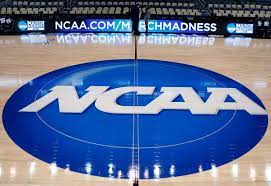 The National Collegiate Athletic Association (NCAA) has been a fixture in college sports for over a century, providing a framework for intercollegiate athletic competition. Recent changes in NCAA rules have brought significant shifts to the landscape of college sports. This blog post will delve into these changes and their impact on college athletes.
The National Collegiate Athletic Association (NCAA) has been a fixture in college sports for over a century, providing a framework for intercollegiate athletic competition. Recent changes in NCAA rules have brought significant shifts to the landscape of college sports. This blog post will delve into these changes and their impact on college athletes.
 The Evolution of NCAA Rules
The Evolution of NCAA Rules
Since its inception, the NCAA has had to adapt its rules to changing times. One of the most significant changes in recent years is the relaxation of rules surrounding Name, Image, and Likeness (NIL) rights for college athletes.
Understanding NIL Rules
Previously, NCAA rules prohibited college athletes from profiting from their name, image, or likeness. This meant that while the colleges and the NCAA could earn significant revenues from college sports, the athletes themselves were unable to receive any personal financial gain. In 2021, the NCAA adopted an interim policy that allows athletes to profit from their NIL.
 Impact on College Athletes
Impact on College Athletes
1. Financial Opportunities
The new NIL rules allow college athletes to earn money through endorsements, social media advertising, and other avenues. This offers athletes a way to financially benefit from their sports involvement during their college years, something that was previously unattainable.
2. Ownership and Control
Athletes now have control over their personal brand. They can manage their name, image, and likeness as they see fit, providing a sense of ownership and independence.
3. Increased Responsibilities
With these new opportunities come increased responsibilities. Athletes must now navigate contracts, tax implications, and other aspects of the business world. This could require new support systems and education to ensure athletes make informed decisions.
Looking Forward
The recent NCAA rule changes represent a significant shift in the landscape of college sports. While they offer new opportunities for athletes, they also introduce new complexities. Schools, athletes, and the NCAA will need to navigate this new terrain carefully to ensure that the changes benefit all parties involved.
In conclusion, the NCAA’s rule changes have brought a fresh wave of opportunities for college athletes. It signifies an important step towards recognizing the significant contributions athletes make to college sports, giving them the chance to benefit from their hard work and talent.
